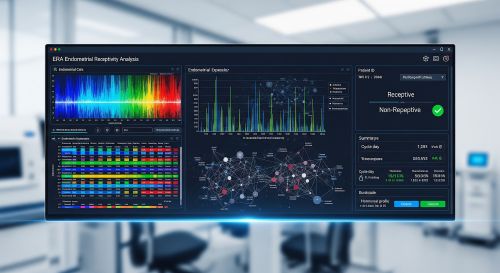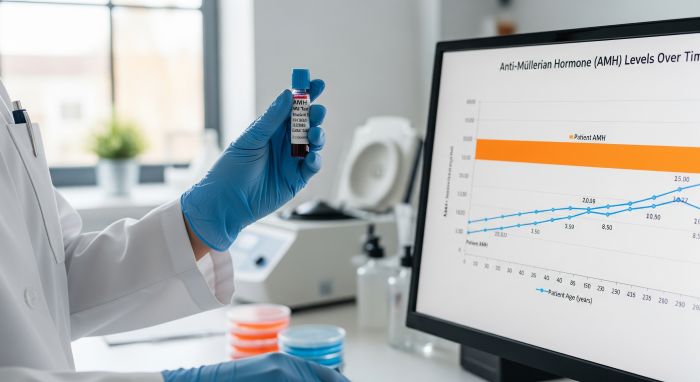
Know Your Ovarian Reserve:
AMH test
.svg)
























What is the AMH test?
Why is the AMH test important for my fertility?


It helps you find clarity and the options you need to take control of your reproductive future, giving you hope and success. Knowing your ovarian reserve is key to planning.
How does the AMH test work?


The AMH test is a simple blood test that can be performed at any time of your menstrual cycle, offering a reliable view of your current ovarian reserve.
What does the AMH level indicate about my fertility?


Your AMH level is a crucial indicator of the number of eggs you have left. A high level suggests a good reserve, while a low level may indicate a low reserve.
What other factors influence ovarian reserve besides AMH?


In addition to the AMH, we consider your age, FSH levels and antral follicle count (RFA) using ultrasound for a comprehensive evaluation of your ovarian reserve.
What options do I have after knowing my AMH level?


Based on your AMH results and a full evaluation, our team of specialists will advise you on the best options, such as family planning, fertility preservation or personalized treatments.
The process to know your ovarian reserve
Let's start your evaluation!
Initial specialist consultation


We evaluate your medical history, reproductive goals, family history of early menopause, previous ovarian surgeries, and risk factors for low ovarian reserve. No special preparation, fasting, or specific time of the menstrual cycle are required.
Simple and convenient procedure


We draw a small sample of blood from a vein in the arm with a sterile needle. The procedure takes less than 5 minutes with minimal discomfort. You can continue with hormonal contraceptives since they don't affect the AMH results.
Specialized laboratory processing


The samples are processed using immunoassay techniques that precisely measure the concentration of AMH. Results are available in 2-7 business days, expressed in nanograms per milliliter (ng/ml).
Personalized specialized interpretation


Our specialists interpret results considering a specific age, complete medical history, and reproductive context. Values should be interpreted with other markers such as FSH, estradiol, and antral follicle count for comprehensive evaluation.
Personalized Action Plan


Based on the results, we develop a personalized plan that may include fertility preservation, reproductive planning, specialized treatments or regular monitoring, depending on your objectives and specific situation.
What do we offer you?
Expert interpretation according to age

Response prediction in assisted reproduction

Complementary comprehensive evaluation

Diagnosis of specific conditions
IVF after 40 - Join us!

Talk to a consultant.
Talk to a consultant.
Schedule an appointment..png)
Paternity test?
Take a quiz!.png)









.png)





.svg)
.svg)